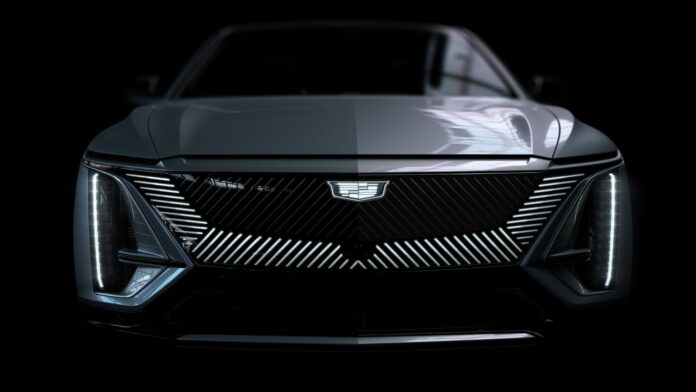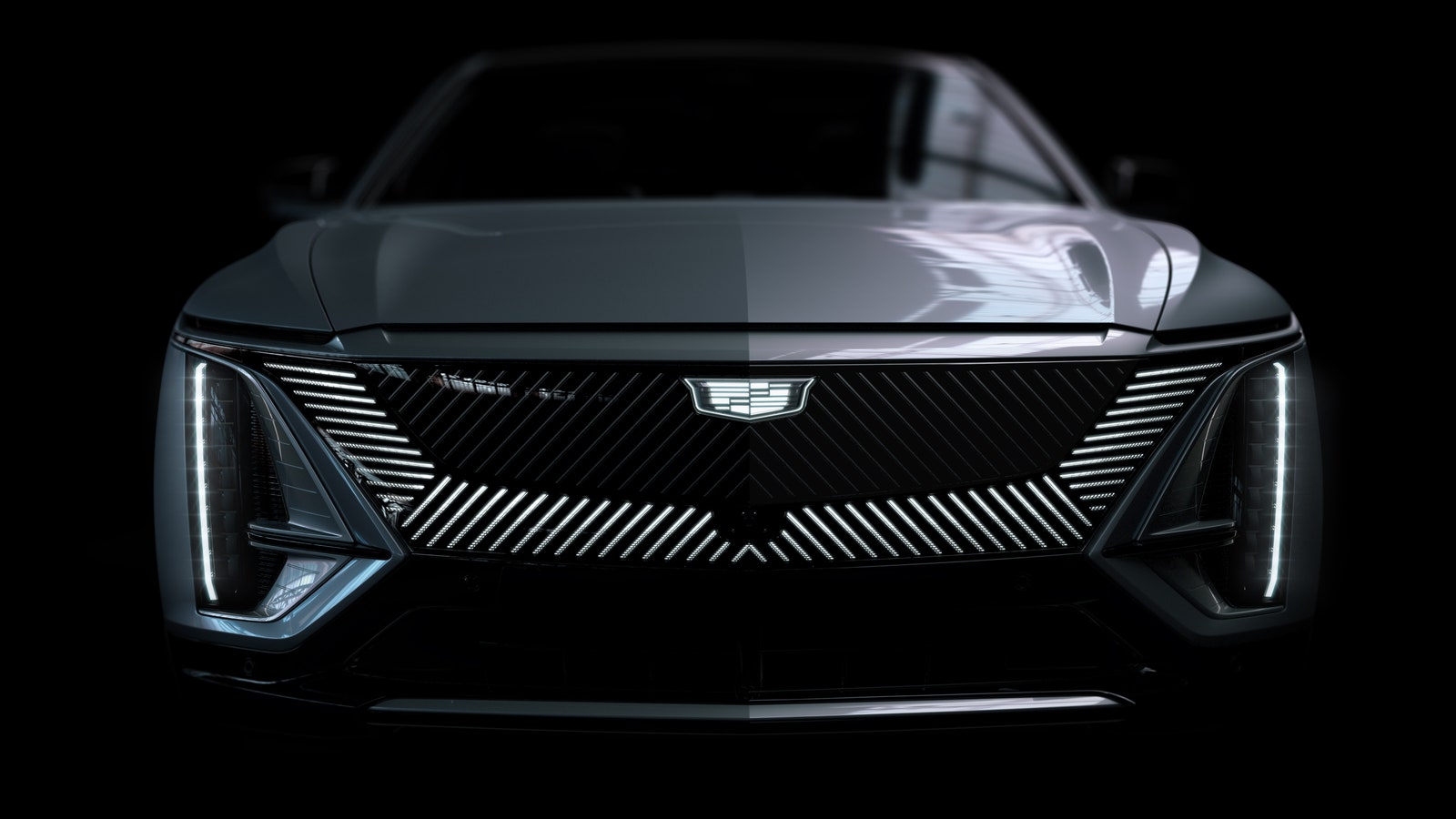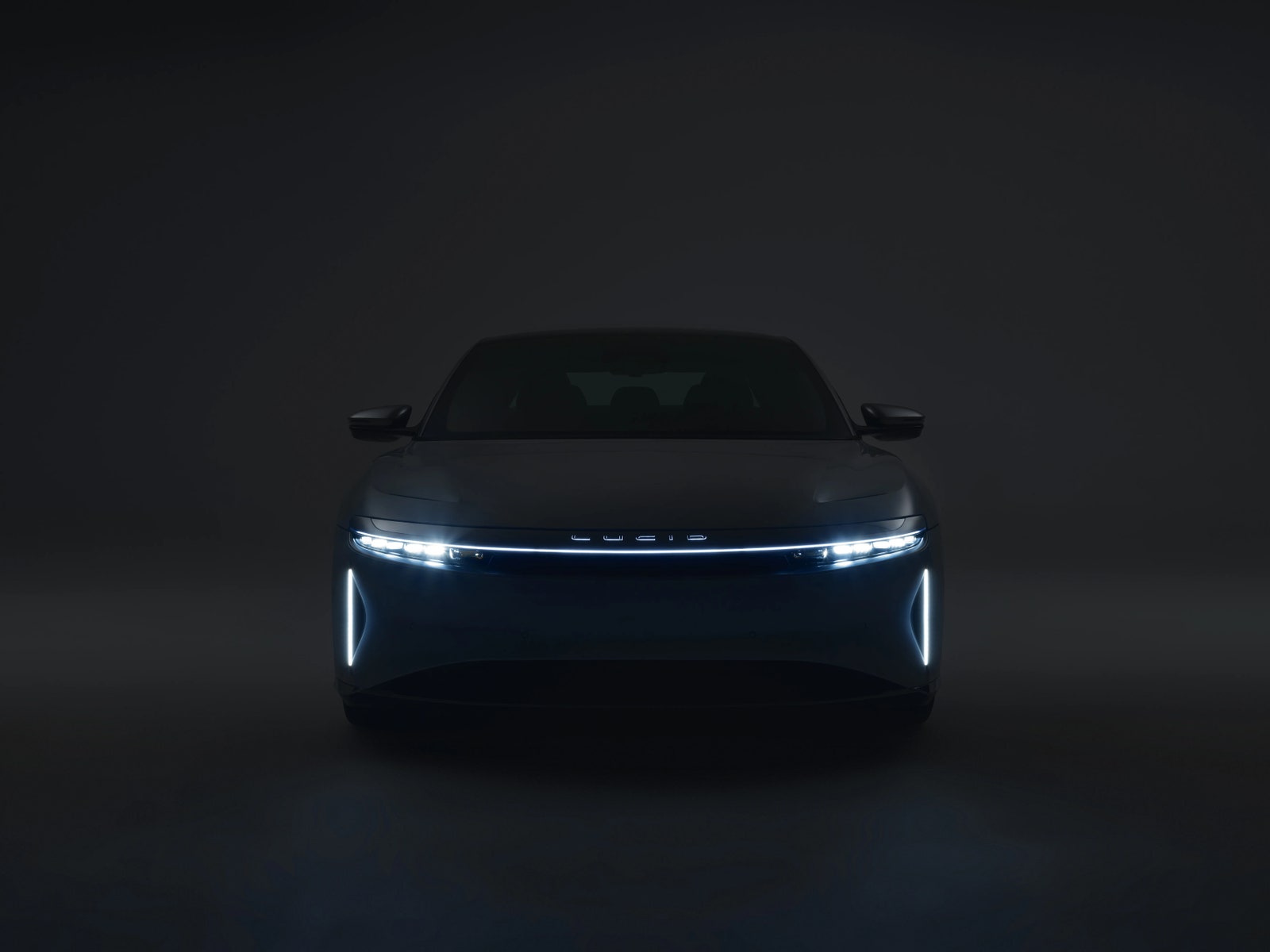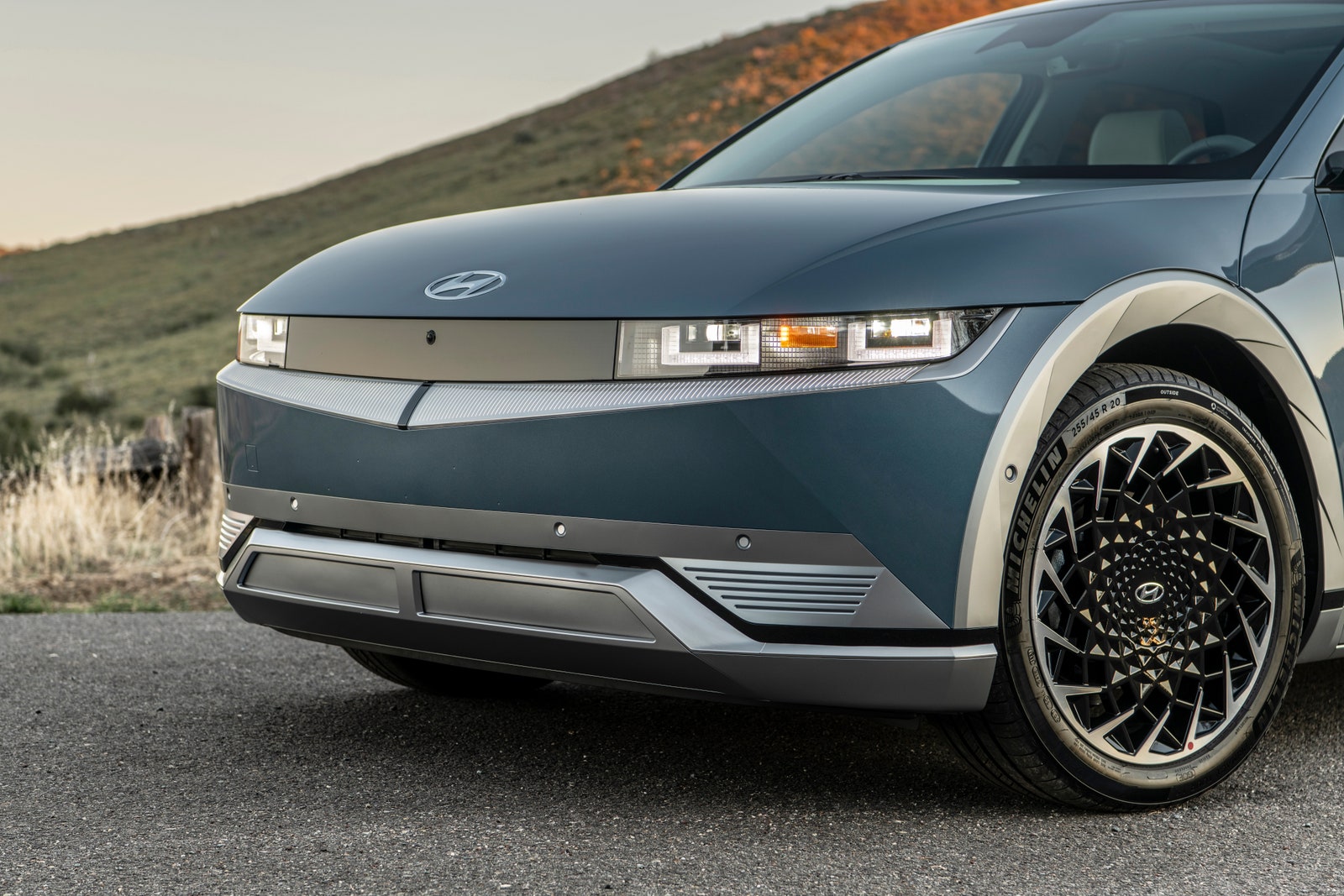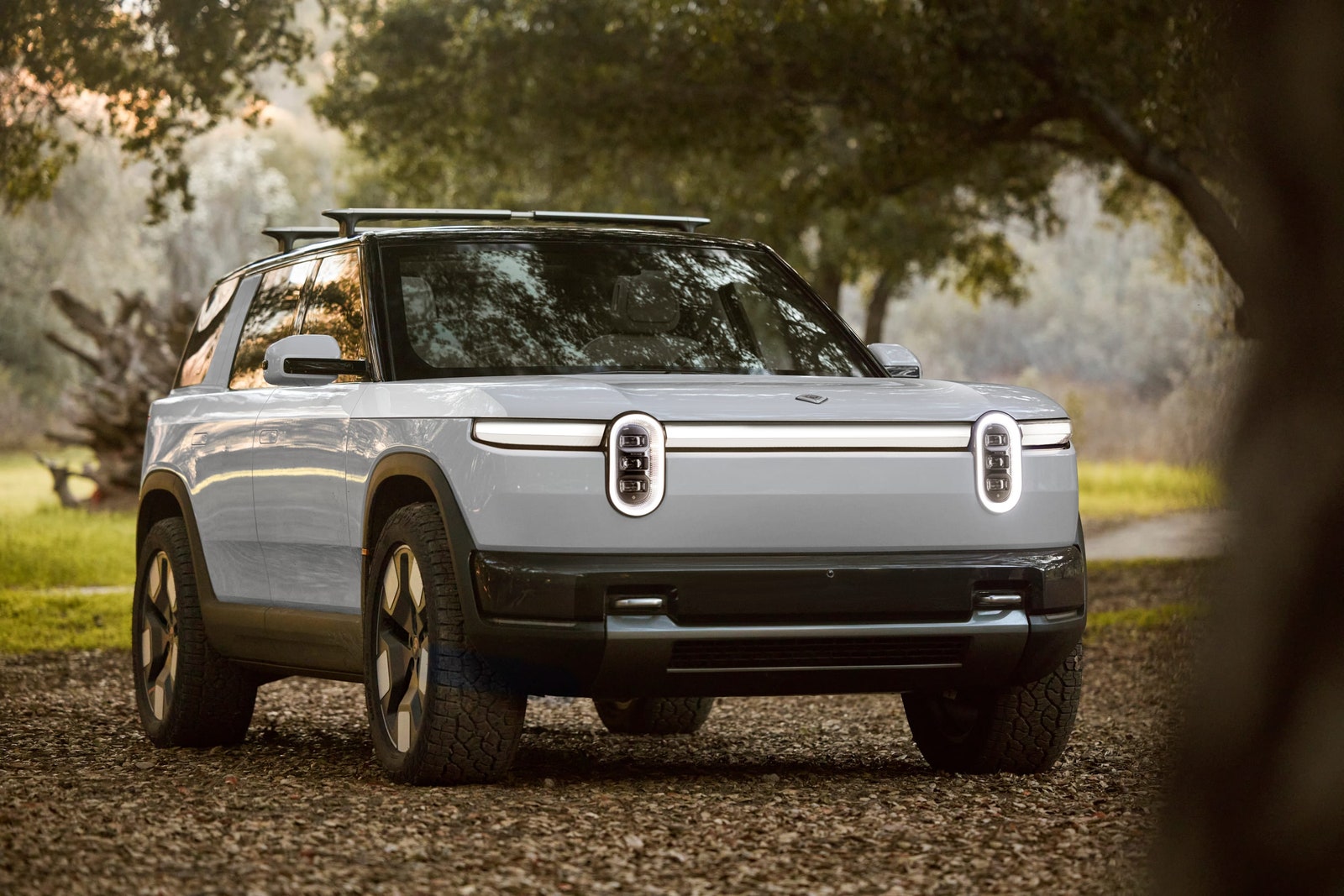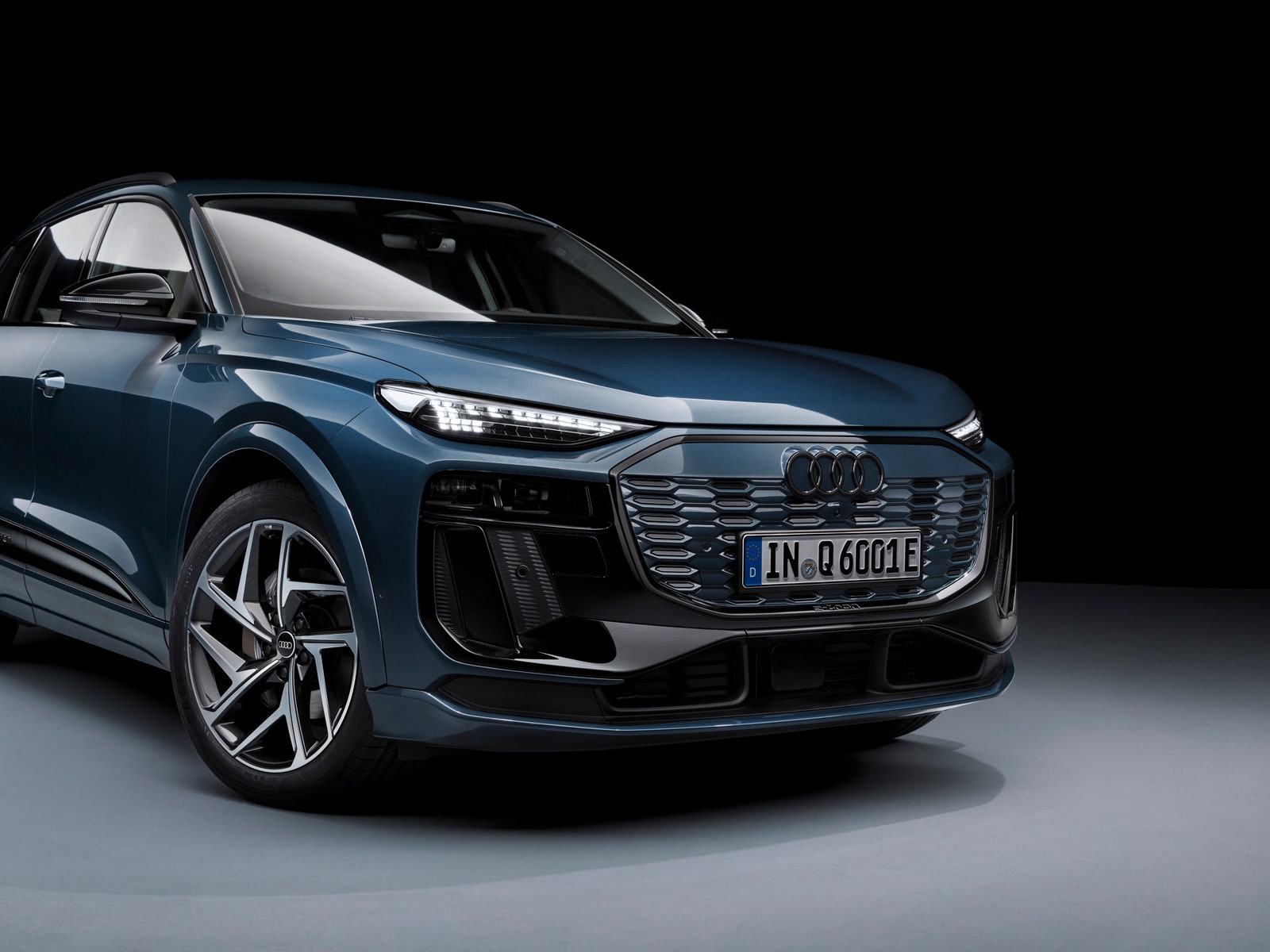Sure, duh: Vehicle lights serve the important and vital safety function of allowing drivers to see where they’re going, and everyone else to see when they’re coming. But for decades, car designers have clocked headlamps and tail lights as an opportunity for creativity, to build a distinctive brand that says, “Here comes that car.” Think of Lamborghini’s y-shaped headlights, or the almost menacing double barrels of the Dodge Challenger, or the halo rings on BMWs.
But a new era of car light design, ushered in by new technologies, powertrains, and even business models, has transformed the front profile of vehicles. “It’s been an incredible, critical acceleration in the last few years,” says César Muntada, the head of light design at Audi.
The result is lights that are brighter, thinner, and in more complex configurations than ever before. Lights that dance when a car is approached by its owner, lights that blink when it’s being charged. Lights that can be customized to fit personal taste, or even mood. Lights that even, if regulators allow them, won’t blind other drivers. In the future, cars might even use lights to communicate with others on the road.
Today, automakers are doubling down on unique headlight signatures, arguing that a car’s front is its most important bit in not only selling the vehicle to customers, but the idea of the vehicle—what it means.
“We call it a face,” says Tim Kozub, who directs Cadillac’s design team. “It relates back to us as humans. The front of the vehicle is the personality.” Internal Cadillac market research shows that people react first to a vehicle’s front, then its rear, and then its side view, he says. So car designers are spending even more time—and money—on getting the face just right.
Light It Up
In some ways, the story of the beautification of the vehicle headlight is the story of advances in light technology. In the mid-20th century, headlights were small, halogen bulbs inside a large eye. By the early 1990s, some automakers began using xenon or high-intensity discharge (HID) headlamps, which were more powerful, efficient, and lasted longer than halogen. At the turn of the century, automakers experimented with using different shapes and textures inside headlights.
Finally: Enter the LED. Starting with a 2007 Lexus, automakers began using the smaller, powerful, and even more long-lasting lights inside headlamps. Headlights no longer needed to be bulbs inside a large casing, says Raphael Zammit, the chair of the Transportation Design program at the College of Creative Studies.
The creativity has flowed from there. “We’ve moved away from the physical aspect of lamps and moved towards a very thin, minimalist perspective,” says Zammit. “You’re looking at lines, gestures of lines. LEDs have taken it to the next level.”
Just in the past few years, automakers including Mercedes-Benz, Audi, and Hyundai have introduced digital headlights, which use LEDs and vehicles’ increasingly sophisticated onboard computers to illuminate with even more specificity. Audi’s Matrix-design headlights can, for example, “greet” drivers with model-specific headlight animations, a kind of personalized hello enabled by advances in lighting.
The OLEDs (Organic Light Emitting Diodes) used in Audi’s Matrix setup both create the picture and emit their own light. You can think of each individual pixel of an OLED display as a tiny, color-changing light bulb. This makes it able to turn off entirely to provide perfect black levels, or illuminate in any color or pure white. We’ll cover more about the benefits and drawbacks of this capability later in this piece.
Gone Electric
Now electric vehicles have brought even more innovation to the headlight world. From a practical perspective, this is because EV “grilles” are different from their gas-powered counterparts. In a standard vehicle, multiple holes in the front take in air to cool down the engine as it fires. EVs need some air to cool their batteries, but not nearly as much. For that reason, designers can take “a ‘blank-page’ approach as we get into EVs,” says Kozub, the Cadillac designer.
Cadillac’s Lyriq and Celestique, both all-electric options, include “slimline” headlights that echo the classic Cadillac tail fin shape. Kozub says Cadillac had always hoped to make a headlight that looked like this; new LED technologies and the smoother front offered by EV tech has simply made it possible.
The California-based electric vehicle startup Lucid was also forced by the particularities of EVs to innovate in headlamps. In its initial offering, a luxury sedan called the Air, the air-conditioning condenser lives at the front of the vehicle. That required the automaker to design a way to build very short headlights, says Hans-Christoph Eckstein, Lucid’s director of electronics and optical engineering. Building a small headlight to accommodate a bigger cooling unit ends up increasing the vehicle’s performance, he says.
Because headlight tech advancement has dovetailed so neatly with the electric revolution, headlights have also become an easy way for automakers to signal that their new EV offerings are ultramodern and luxe. “The easiest, clearest way to express innovation is through light,” says Muntada, the Audi designer.
For Lucid, lighting is the easiest way to communicate that the car is advanced. “A new type of lighting makes people think: New car, new electrification,” says Jenny Ha, who directs the automaker’s exterior design.
The Lucid Air’s headlights, made up of six slim LED arrays, have become a signature design feature—and a launching point for the car’s branding. Jamie Calderon, a partner and creative director at the creative agency Tolleson who worked with Lucid to launch the vehicle, says every bit of the EV, from its overall shape down to its lighting and even badge typography, is meant to communicate sleekness and simplicity. “It’s all very thin, very elegant, very reductive,” he says.
Hyundai has said its pixelated lamps, found in the all-electric Ioniq 5’s daytime running lights and rear, are arranged in an EV-specific design that will echo in all future Ioniq models.
Distinctive headlight shapes can even be protected by design patents, says Jeremy Kriegel, a partner and chair of the design patents practice group at the intellectual-property-focused law firm Marshall, Gerstein & Borun.
Recently, though, automakers have spent the most time and money defending design patents from aftermarket parts manufacturers, not other designers, he says. In general, it seems, automakers actively avoid each others’ most distinctive headlight designs because they want to build their own distinctive brands.
Electric automaker Rivian wanted to do just that. RJ Scaringe, Rivan’s CEO, told WIRED at a car event this spring that the mission was to make its lighting design feel iconic. For the company’s designers, the starting place was, again, a familiar theme: Simplicity. “When you have complex forms, they tend to be of-the-moment and age poorly,” he says.
Yet the designers also needed to come up with something memorable and distinctive. And something that would look great on vehicles beyond the initial offerings in Rivian’s lineup, a large truck and SUV. Scaringe says he remembers looking at Rivian’s initial sketches in 2016 and thinking, “Boy, this front end really could work on a much smaller car, on a crossover.”
Now the automaker’s distinctive oval lights and thick lightbar are set to appear on the next two vehicles in its lineup, a more affordable SUV and a small hatchback.
A refresh of Rivian’s original truck and SUV, announced earlier this summer, is slated to feature adaptive drive beams that change depending on oncoming traffic, and an updated horizontal lightbar with 10 different sections that can show off color. Right now, the bar illuminates green squares while charging to demonstrate how far the battery has to go, but in the future, Rivian could use the bar to illustrate other features, it claims.
Headlight Future
New vehicles and concepts illuminate the way forward for vehicle lighting. The future might be less about iconic headlight arrangements, and more about this changeability Rivian craves. In the new, second generation Audi Q6 e-tron, lights “come alive” thanks to six digitally-powered OLED panels full of 360 individually controlled segments.
The tech also allows the vehicle to automatically make micro-adjustments for different lighting and traffic conditions, which helps eliminate one of the most common headlight complaints: That they blind oncoming drivers. (Note: Because of regulations, Audi says, this technology is not currently available in North America.) Audi will also allow drivers to choose between eight different sets of headlight profiles—that way, you’ll supposedly know when your car approaches that it is your husband or wife, not your son or daughter, that’s behind the wheel.
It’s an interesting idea. It also presents challenges for automakers. If headlights are branding, what’s the value of a brand “face” that can be changed by customers with a few taps on a phone? Or as Zammit, the design professor puts it: “If our eyes can be anything, who are we?”
Audi says it isn’t worried about the branding adjustments. “If you look at the history of Audis, each Audi was different,” says Muntada, the automaker’s head of light design. Now the brand is ready to press into what it sees as the next frontier of lighting: Using breakthroughs in light and precision to “speak” to other road users.
You can see this already on the new, second generation Q6 e-tron, as well as the A5 hatchback, both released this year: Small triangles automatically illuminate inside the taillights to tell anyone behind the vehicle that there’s an accident or obstruction ahead. (The vehicle “knows” this thanks to road data collected by third parties.)
But Audi’s ambitions are grander than small triangles, says Muntada. “Our target is to create a language of [light] communication that is internationally understood,” he says. Regulators will have to get involved at some point, yes, but, in the future, an Audi’s lights might be able to tell other drivers not only that hazards lie ahead but precisely what kinds of hazards.
Such forms of vehicle-led communication might get even more important in a future without drivers, of course. Waymo’s robotaxis, for example, illuminate their “roof domes” to inform other road users that the vehicles are yielding to pedestrians.
Audi’s light vision will need more regulator involvement, and that will inevitably mean delays. But, unsurprisingly, Michael Kruppa, who heads up headlight development at Audi, remains bullish: “We are reaching a new level of what we can really do.”
Source : Wired



